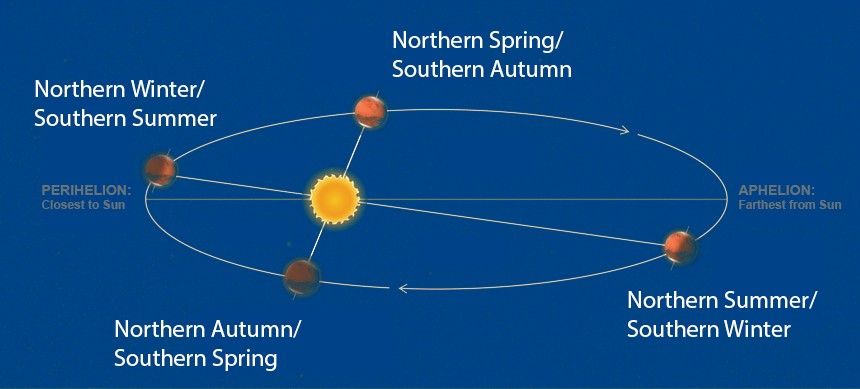June’s Night Sky Notes: Seasons of the Solar System
- Two planets, Uranus, are shown side-by-side for comparison, highlighting their unique seasonal patterns. Uranus’ seasons last around 40 years due to its tilted axis and slow orbit.
- Mars experiences a Martian Autumn every year, lasting about 687 Earth days, with temperatures ranging from -18°F to -12°F (-27°C to -24°C) in the week of May 20, 2025.
- Saturn’s seasons last seven years due to its 29-year orbit, and scientists can observe a ring plane crossing on Earth instead. The most recent plane crossing took place in March 2025.
- Neptune’s seasons are much slower and less dramatic than on Earth, with each season lasting over 40 years due to its tilted axis and slow orbit. Scientists have observed seasonal activity in Neptune’s atmosphere using Hubble Space Telescope images.
- A Suntrack model can be used to demonstrate the path the Sun takes through the sky during the seasons, providing a fun way to explore the changing of the seasons on other planets.
June’s Night Sky Notes: Seasons of the Solar System

NASA
by Kat Troche of the Astronomical Society of the Pacific
Here on Earth, we undergo a changing of seasons every three months. But what about the rest of the Solar System? What does a sunny day on Mars look like? How long would a winter on Neptune be? Let’s take a tour of some other planets and ask ourselves what seasons might look like there.
Martian Autumn
Although Mars and Earth have nearly identical axial tilts, a year on Mars lasts 687 Earth days (nearly 2 Earth years) due to its average distance of 142 million miles from the Sun, making it late autumn on the red planet. This distance and a thin atmosphere make it less than perfect sweater weather. A recent weather report from Gale Crater boasted a high of -18 degrees Fahrenheit for the week of May 20, 2025.
Seven Years of Summer
Saturn has a 27-degree tilt, very similar to the 25-degree tilt of Mars and the 23-degree tilt of Earth. But that is where the similarities end. With a 29-year orbit, a single season on the ringed planet lasts seven years. While we can’t experience a Saturnian season, we can observe a ring plane crossing here on Earth instead. The most recent plane crossing took place in March 2025, allowing us to see Saturn’s rings ‘disappear’ from view.
A Lifetime of Spring

Even further away from the Sun, each season on Neptune lasts over 40 years. Although changes are slower and less dramatic than on Earth, scientists have observed seasonal activity in Neptune’s atmosphere. These images were taken between 1996 and 2002 with the Hubble Space Telescope, with brightness in the southern hemisphere indicating seasonal change.
As we welcome summer here on Earth, you can build a Suntrack model that helps demonstrate the path the Sun takes through the sky during the seasons. You can find even more fun activities and resources like this model on NASA’s Wavelength and Energy activity.

